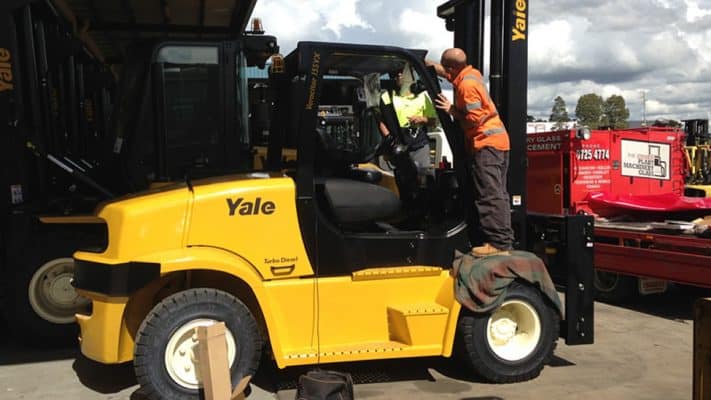Whether you’re a employer, employee of visitor to a site, workplace safety should always be front of mind. Why? Well, it’s by paying attention to safety regulations that we protect ourselves and others from harm and minimise the risk that accident or injury will occur.There are lots of things we can do to keep employees and visitors safe: risk assessments, the use of health and safety software to monitor and report incidents, and frequent, high-quality training are all key tools to prevent an injury from occuring. However, one precaution we should pay attention to is the practice of daily checks.
We all know that forklifts are particularly dangerous in the workplace, so alongside proper training, supervision and maintenance daily checks are crucial. Why? Well as this article points out, all vehicles age, and it’s no different for forklifts. You’ll need to keep forklifts in good condition, not only for business reasons (such as avoiding damage to loads or costly repairs), but for the wellbeing of those operating them or performing work tasks nearby.
Here’s what an operator should look for when carrying out daily checks:
Daily Checks
Faults from the previous day – First check to see if anything has gone wrong from the previous day or shift. Report any faults that haven’t been rectified before the forklift is operated.
Damage to the bodywork – you might not think damage to the bodywork is a big deal, but it can often indicate problems in other areas of the truck. For instance, damaged bodywork could indicate that there’s damage to racking or other equipment, so inspect it carefully.
Obvious leaks – Check the floor for evidence of leaks, beside the forklift and underneath it, too. If you think there’s a leak somewhere and decide to check the fuel level, engine oil level or coolant level right away, be sure to wear protective gloves and ensure you’re safely away from fire hazards.
Foreign objects – the mast and carriage on a forklift can sometimes pick up foreign objects. Check for items that shouldn’t be there and remove them if they are, debris can cause major damage.
Damage to the tyres – Check all the tyres for any obvious signs of damage. Keep an eye out for cuts and tread wear on the tyre, and look at the wheels for signs of damage, too – the rims will need particularly close inspection – and ensure that the wheel nuts are tight. If the forklift has pneumatic tyres, ensure they are the correct pressure
Inadequate brakes – Check to see if the service brakes are working efficiently and normally. Do the same with the parking brake, ensuring that it releases correctly.
Obstruction to controls – Look for any obstructions to both the foot and hand controls. Even if it doesn’t look like there’s anything there, check that the controls are operating as they ought to be. Check the steering as well
Damage to the forks – You’ll need to keep an eye out for cracks in the forks, especially at the heels. Check the securing pins, too.
Damage to the seat or seatbelt – Make sure that the seat belt is secure and functional. The operator must ensure that the seat is correctly fixed to the truck. They should also check that it hasn’t loosened of become damaged.
Finally, remember that these daily checks must not be cursory. Daily checks are of vital importance for ensuring the safety of operators, other employees and visitors to the workplace. Failing to carry out daily checks properly could result in harm, downtime, the cost of repair, prosecutions, fines or even the death of an employee.
The operator documents any issues uncovered by the daily checks. Do not become complacent – just because someone else has carried a check doesn’t mean that the individual forklift operators shouldn’t be carrying out their own checks, too, to ensure the forklift is safe to use
For any further information or feedback, please feel free to contact us at enquiries@hystandard.com.au or leave us a comment below
